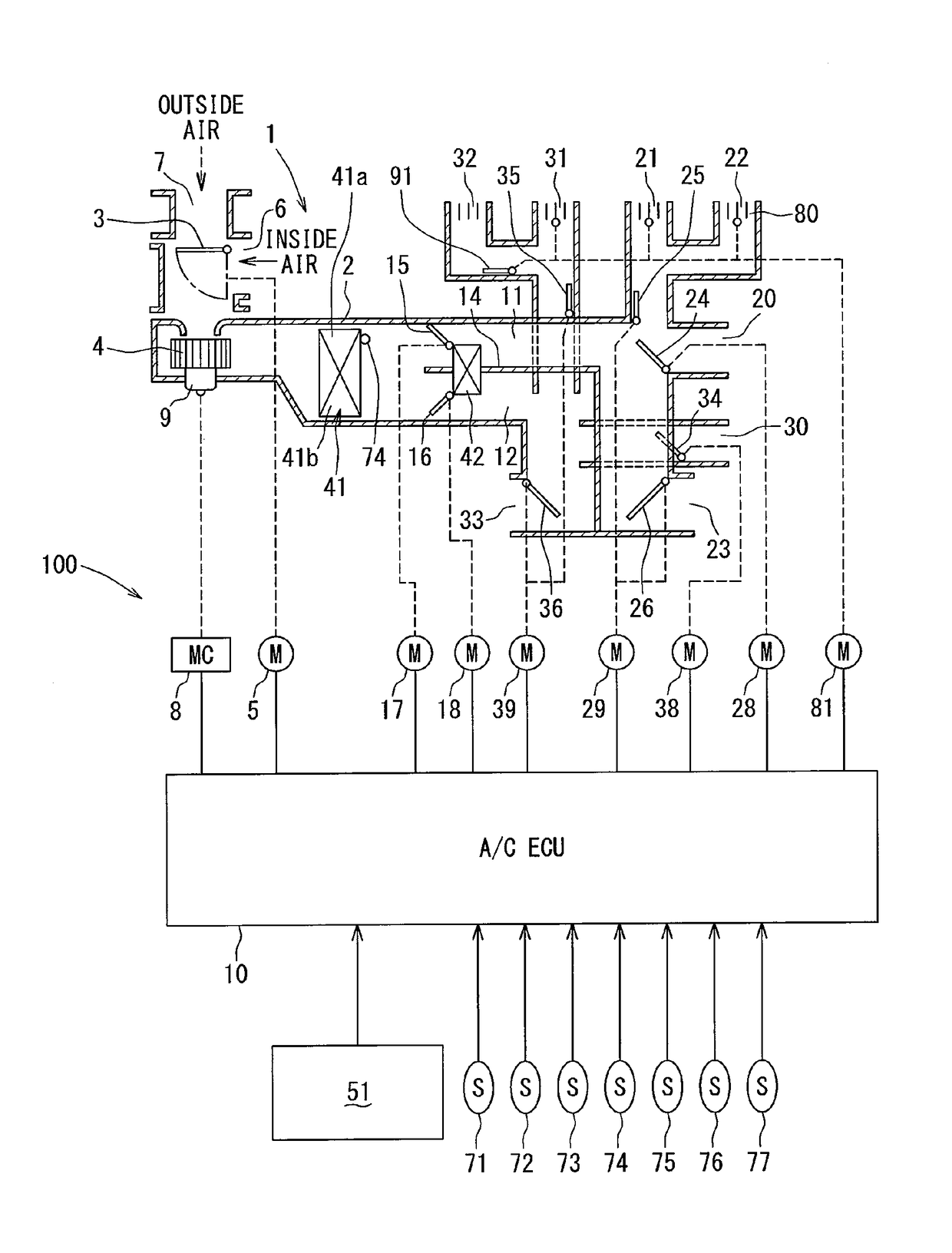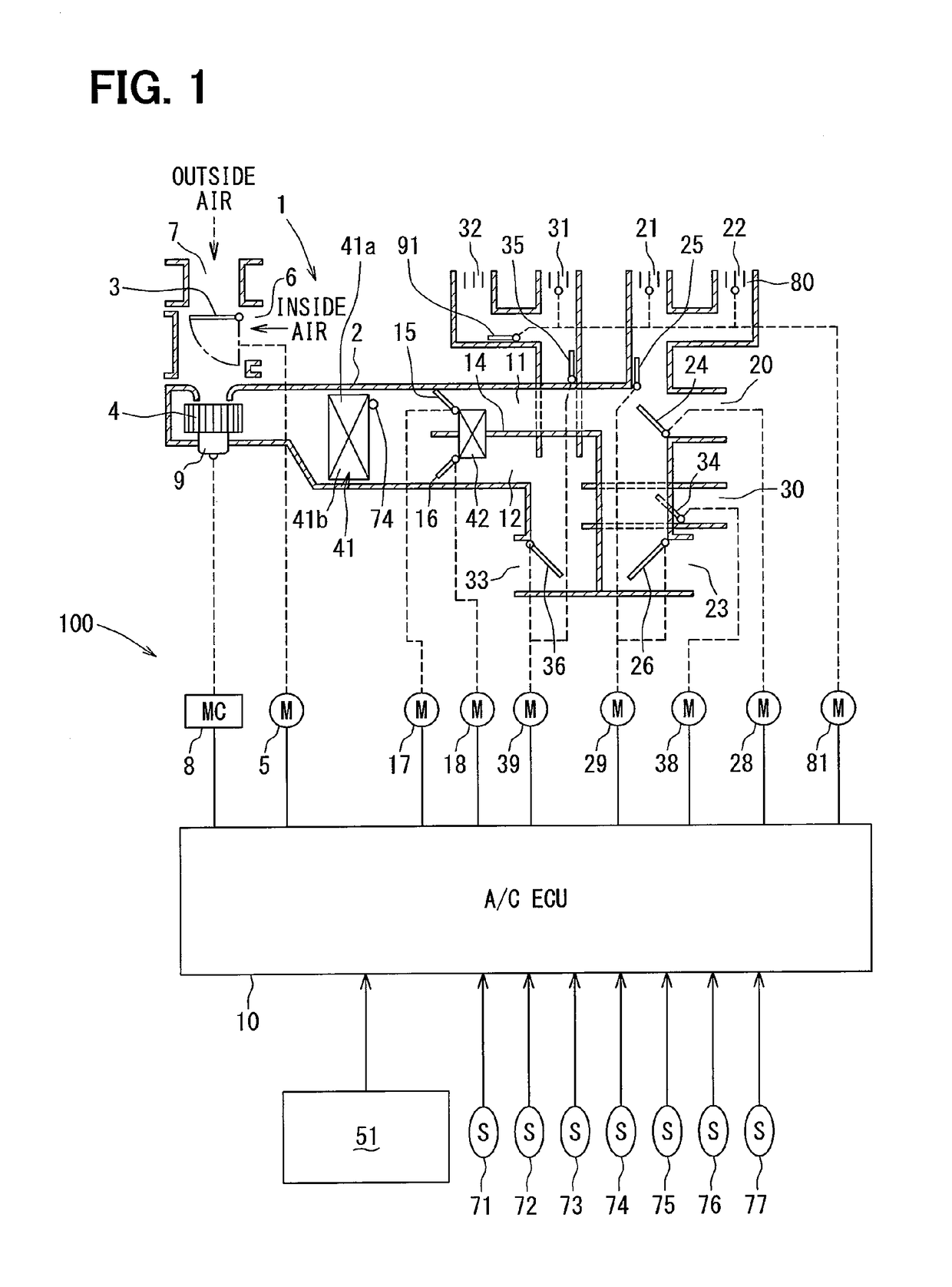Air conditioner for vehicle
a technology for air conditioners and vehicles, applied in the direction of domestic cooling devices, lighting and heating devices, cooling fluid circulation, etc., can solve the problems of easy frosting of uniform flow-speed distribution of air flowing through the evaporator, etc., to achieve the effect of reducing the flow speed of air flowing through the passenger seat side part of the evaporator and intensive air conditioning operation
- Summary
- Abstract
- Description
- Claims
- Application Information
AI Technical Summary
Benefits of technology
Problems solved by technology
Method used
Image
Examples
first embodiment
[0029]A first embodiment of the present disclosure will be described below referring to FIGS. 1-9. FIG. 1 is a schematic diagram illustrating a configuration of an air conditioner 100 for a vehicle of the first embodiment. FIG. 2 is a front view of an instrument panel 50 to which the air conditioner 100 is disposed and shows locations of air outlets for front seats. FIG. 3 is a front view of an air-conditioning operating panel 51.
[0030]The air conditioner 100 is an automatic air conditioning system for a vehicle, for example, a vehicle mounting a water-cooled engine for driving. In the air conditioner 100, an air conditioning unit 1 performing air conditioning operation in a passenger compartment of the vehicle is controlled by an air-conditioning electrical control unit (i.e., an air-conditioning ECU) 10.
[0031]The air conditioning unit 1 is a left / right independent type air conditioning unit capable of (i) independently regulating temperature of a driver-seat-side area to be air co...
PUM
 Login to View More
Login to View More Abstract
Description
Claims
Application Information
 Login to View More
Login to View More - R&D
- Intellectual Property
- Life Sciences
- Materials
- Tech Scout
- Unparalleled Data Quality
- Higher Quality Content
- 60% Fewer Hallucinations
Browse by: Latest US Patents, China's latest patents, Technical Efficacy Thesaurus, Application Domain, Technology Topic, Popular Technical Reports.
© 2025 PatSnap. All rights reserved.Legal|Privacy policy|Modern Slavery Act Transparency Statement|Sitemap|About US| Contact US: help@patsnap.com



